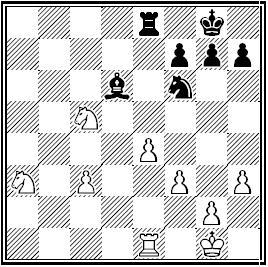Defensive Tactics
I have always felt that it is easier to see forks, picks, pins, x-rays, etc. from an offensive standpoint. That is I can more easily spot, for example, a fork I can execute with my knight, then play moves correctly preventing my opponent from using a knight fork on me.
I do not think this is a coincidence. All tactics programs and books focus on tactics from the offensive prospective. This is only fair. An offensive tactical problem demands the reader to play one accurate move. A defensive tactical problem would demand the reader to avoid making a key move. In the former, a reader would be "right" with only one (or usually only one) key move (i.e., the move leading to where the fork, pin, etc. could be executed). In the latter, the reader is "right" if he or she makes any move other than the move leading to the fork, pin, etc. This is a subtle but profound difference. How could a book be composed of defensive problems? when 99.9% of all the moves are viable and correct?
Here's an example my current troubles:
This is the position (see diagram 1) I faced in a recent game. As the reader can see, as white, I am a pawn ahead. However, I am nervous by the black a-pawn and the fact that it has the a8 rook providing a strong defensive cover for it. Fearing the worse, and not really thinking throughly (once again, time pressure was looming its ugly head), I went with the obvious, but clearly wrong 1. Rxa3?.
This only lead to diaster. After this move came, 1... Rxa3 2. Nxa3 Bd6! And now I am facing an awful a bishop attack on both my knights. (See Diagram 2). Nothing can be done. One of them will clearly fall to the menacing bishop.
It's an interesting self-observation. Now how do I rectify it, I have no idea! But as they say, the first part in overcoming one's shortcomings is to identify what that shortcoming is.



0 Comments:
Post a Comment
<< BACK TO THE REST OF THE SITE!